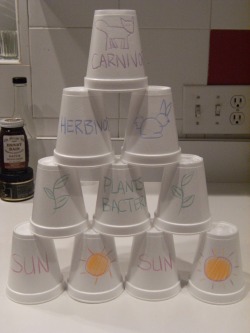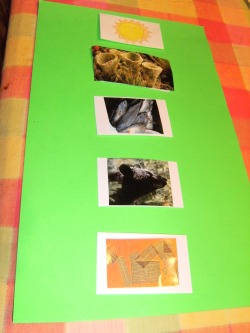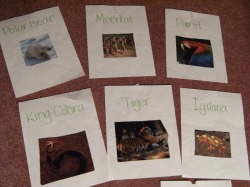ECOLOGY
Food Chain Pyramid

This activity is designed to show students how all parts of the food chain are interdependent on one another. Students should begin by decorating four paper or styrofoam cups to represent the sun, the base of all food chains. Three more cups can be decorated to illustrate plants and bacteria, the producers that use the sun to synthesize their own food. Next, students can decorate two cups to represent the herbivores, consumers directly feeding off the producers. Finally, the last cup should illustrate a carnivore. Students should stack the cups into a pyramid to represent the food chain. The teacher then removes one of the cups, or an element, of the food chain pyramid. Students should observe that by removing one part of the food chain, the other parts are affected.
Design Your Own Food Chain

This activity can be used over and over to make different kinds of food chains. First the teacher should apply five squares of velcro on a poster board, all in a row. The other half of the velcro should go onto the back of a blank index card. Students can draw pictures or cut them out of magazines like National Geographic. The pictures can be glued onto the cards. Once a student has all the elements of a food chain (sun, producer, consumers, and decomposer) on index cards, they can attach them to the poster in the correct order. Each student can present and explain their food chain to the class. Other students can mix and match cards.
Animal Who's Who Game

This game is a form of twenty questions. The teacher can cut out pictures of organisms from magazines and glue them onto individual papers. The teacher should label the organism on the paper. Students should then pair up. One student will tape an animal paper on their partner's back without them seeing it. The partner with the paper then has to ask "yes" and "no" questions to figure out what their animal is. Questions may include "Do I have fur?", "Do I have stripes?", "Do I live in water?", etc. Once the student identifies their organism, the team must decide the biome in which the animal belongs.
